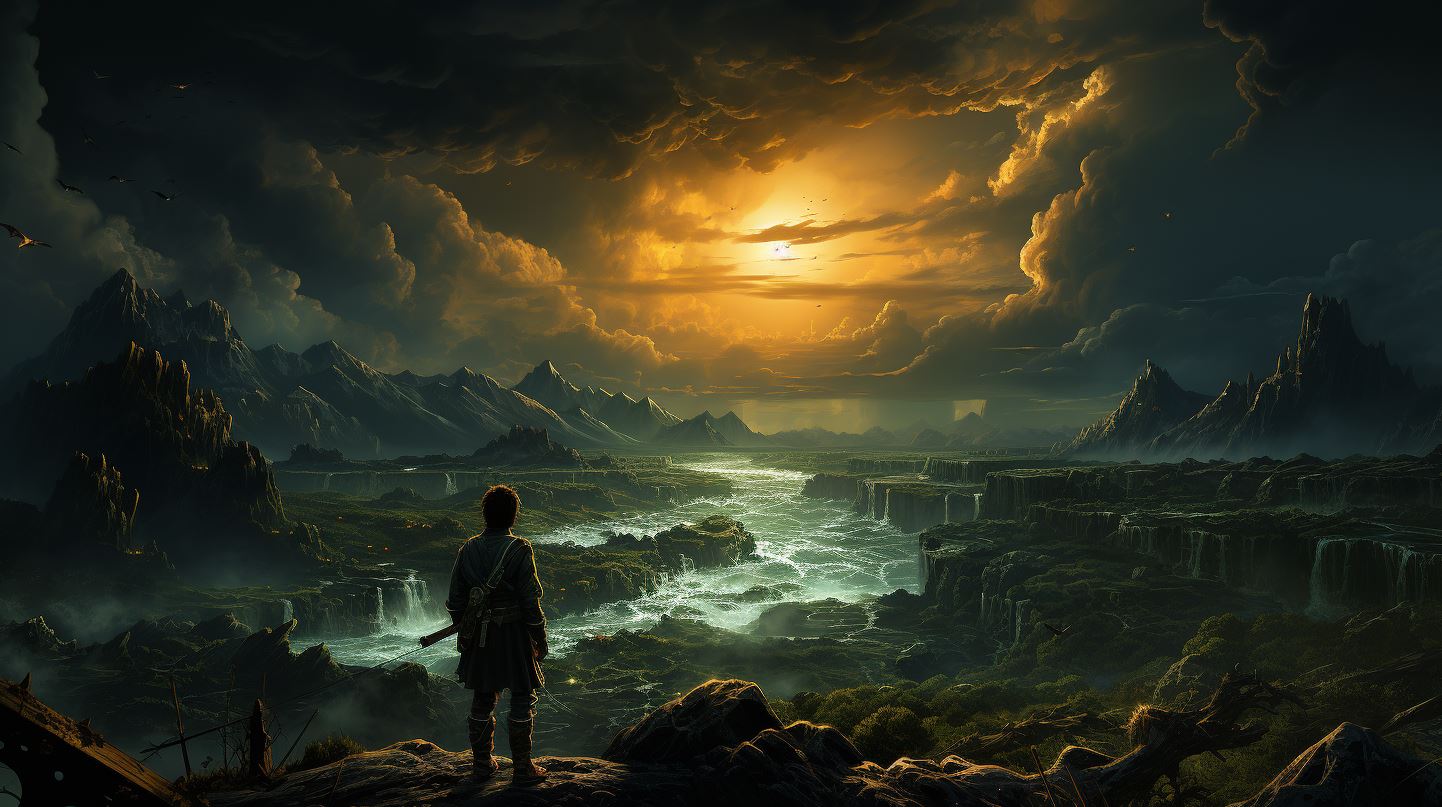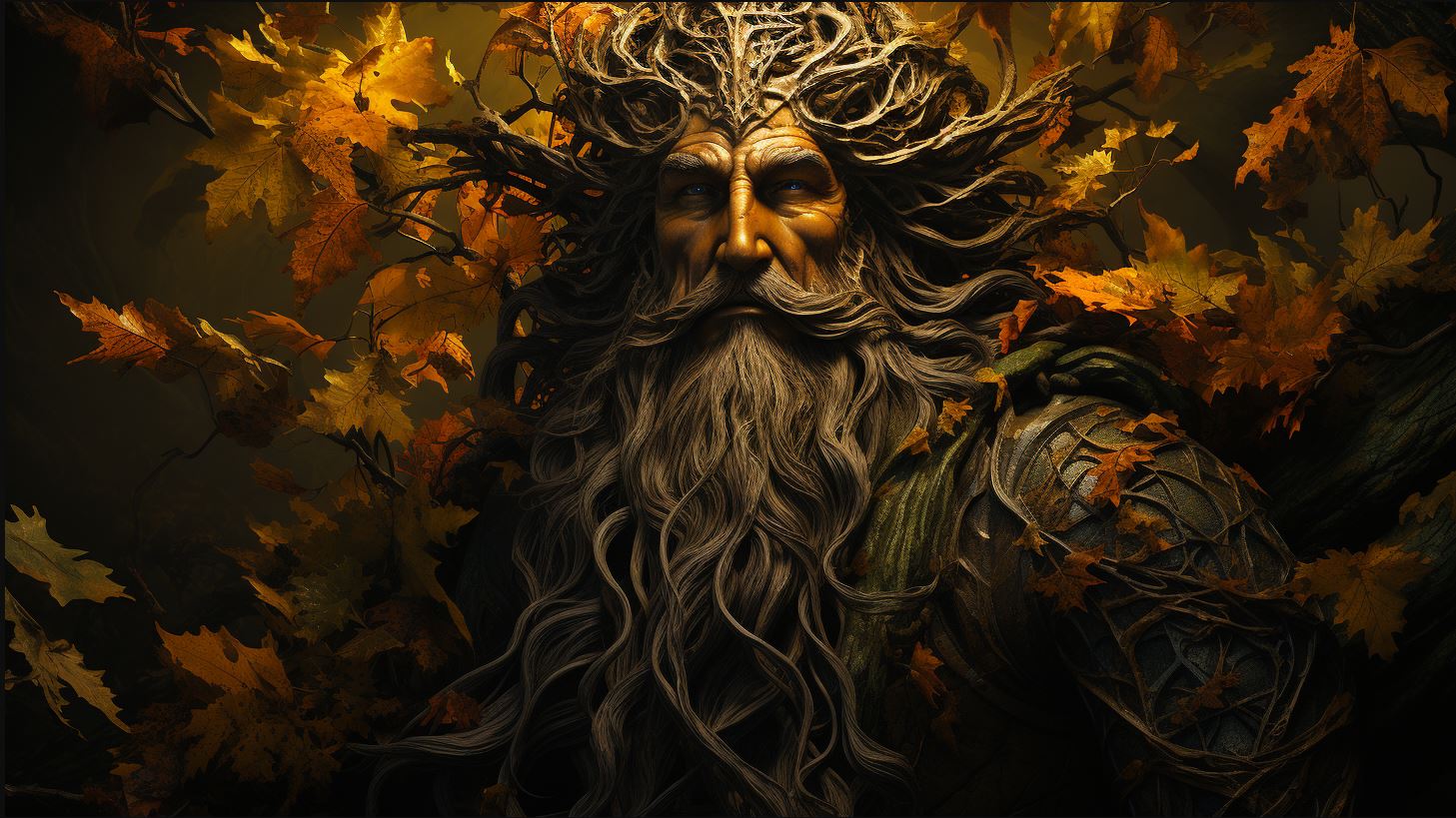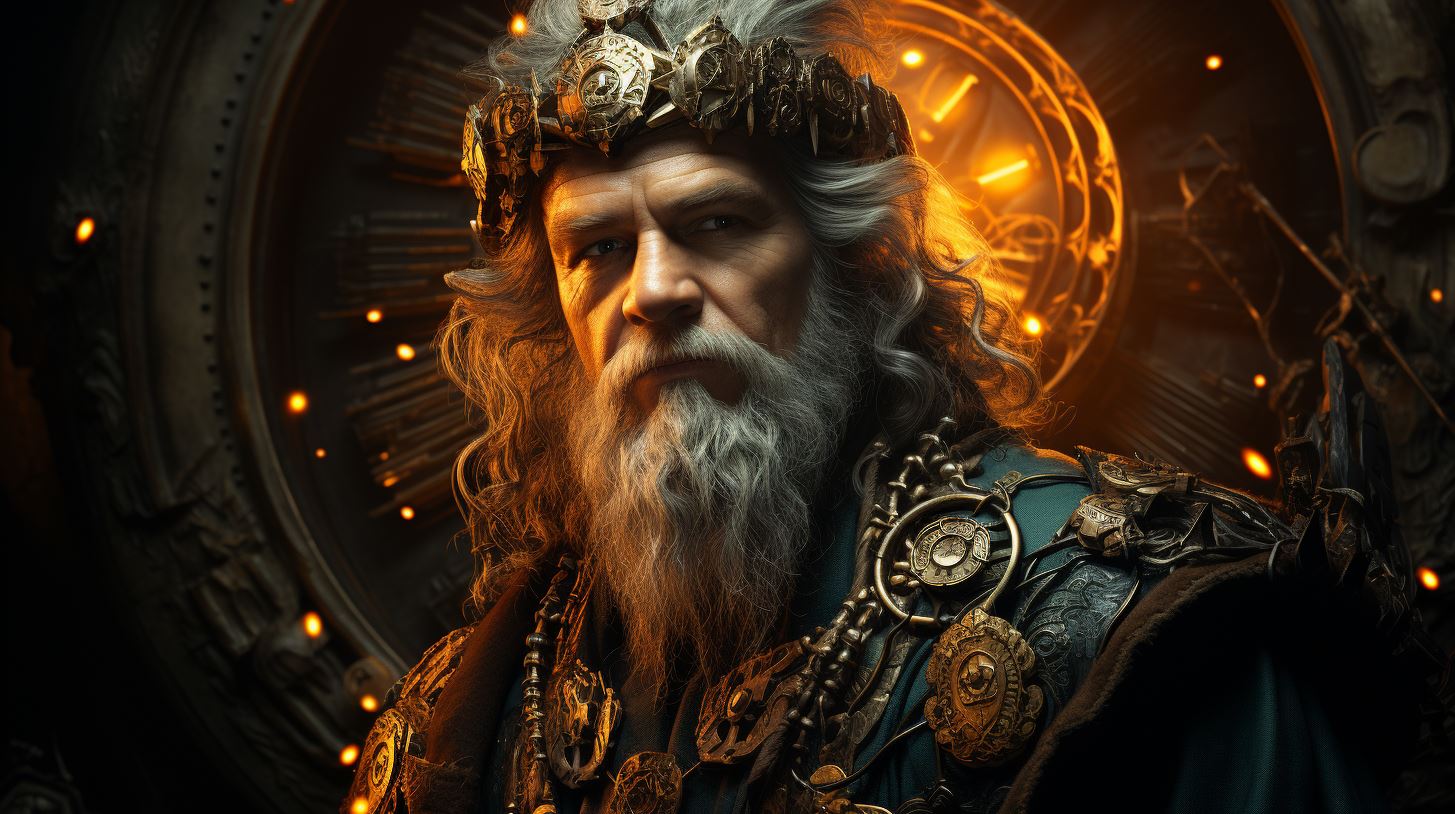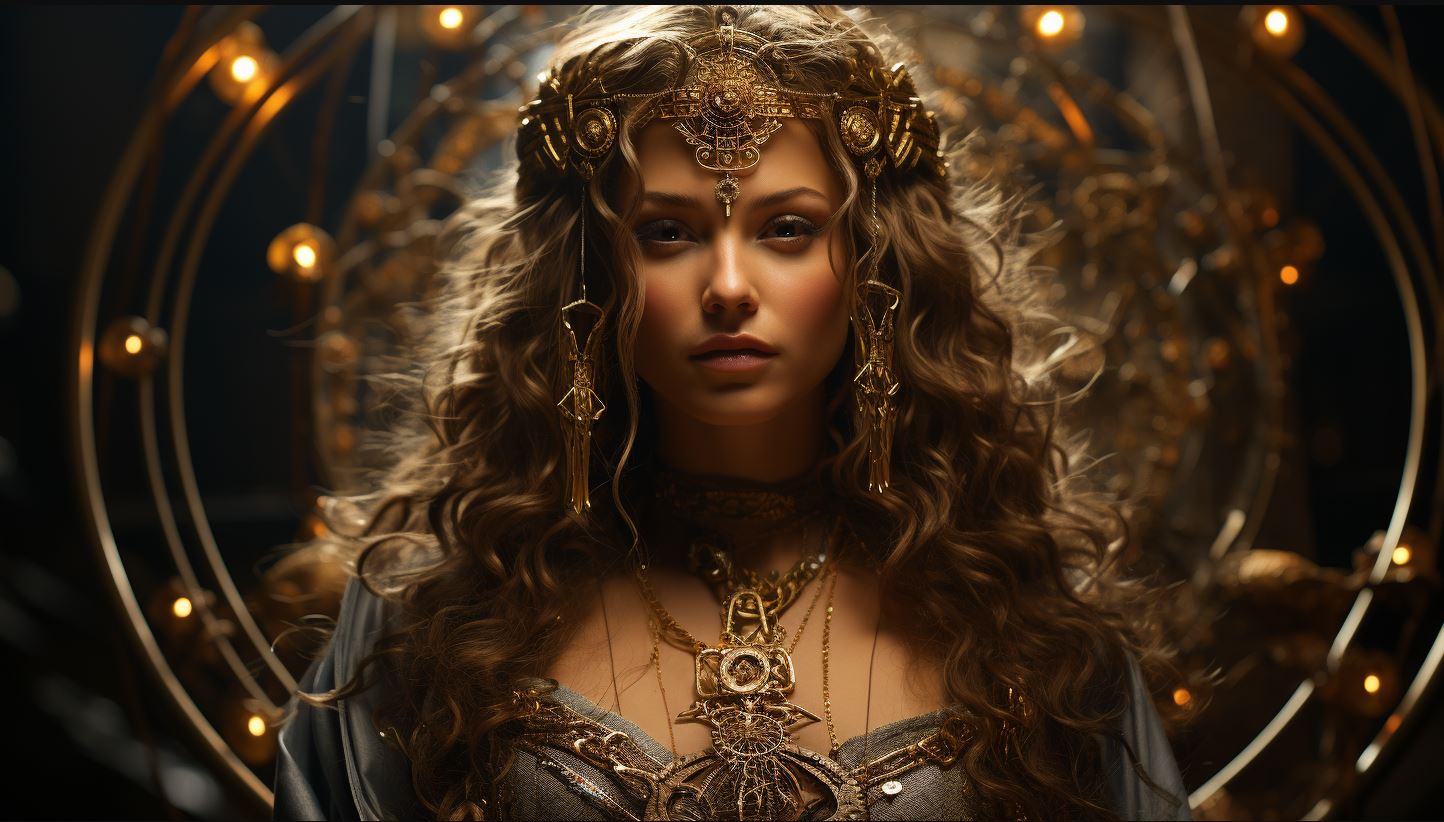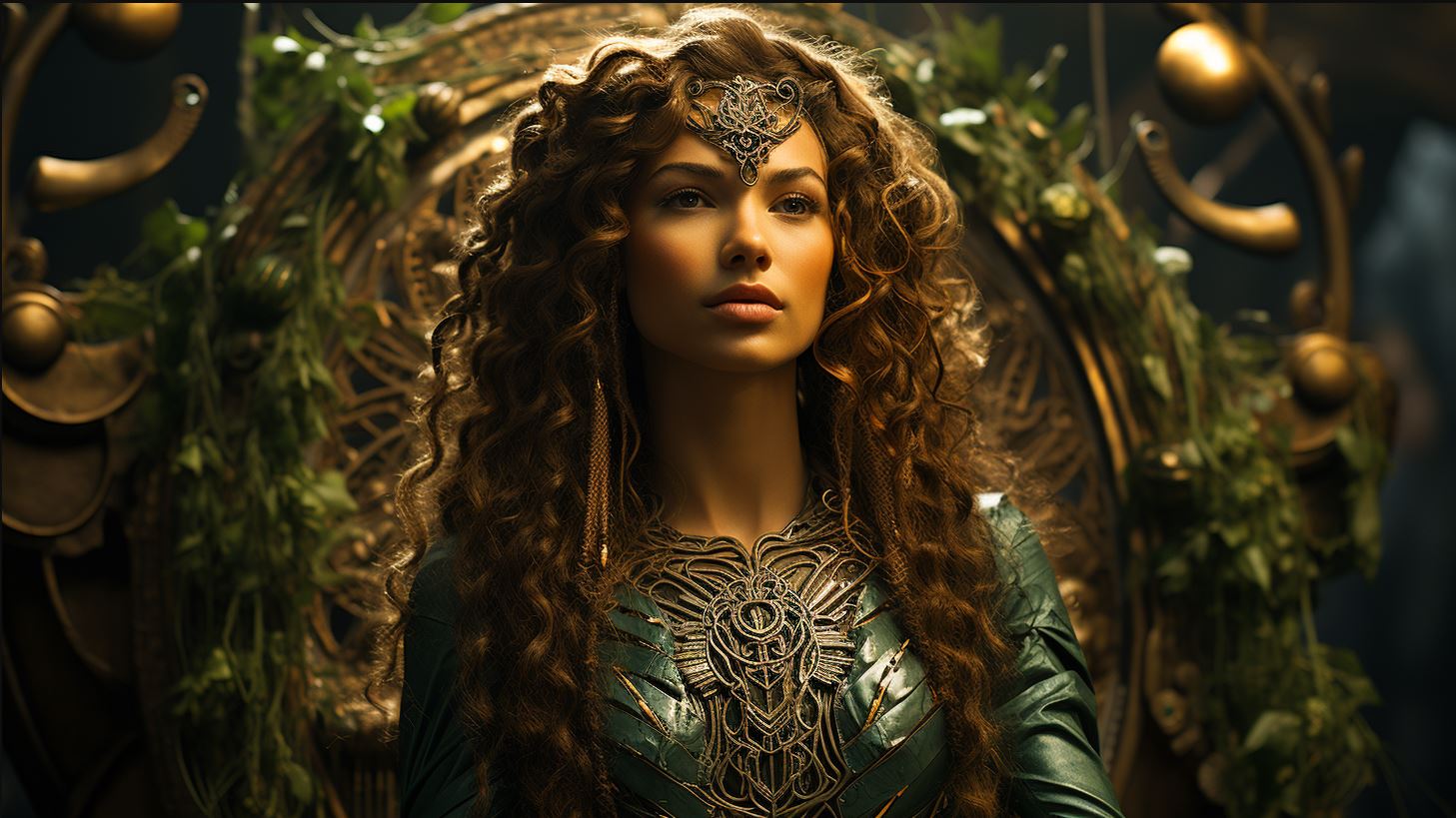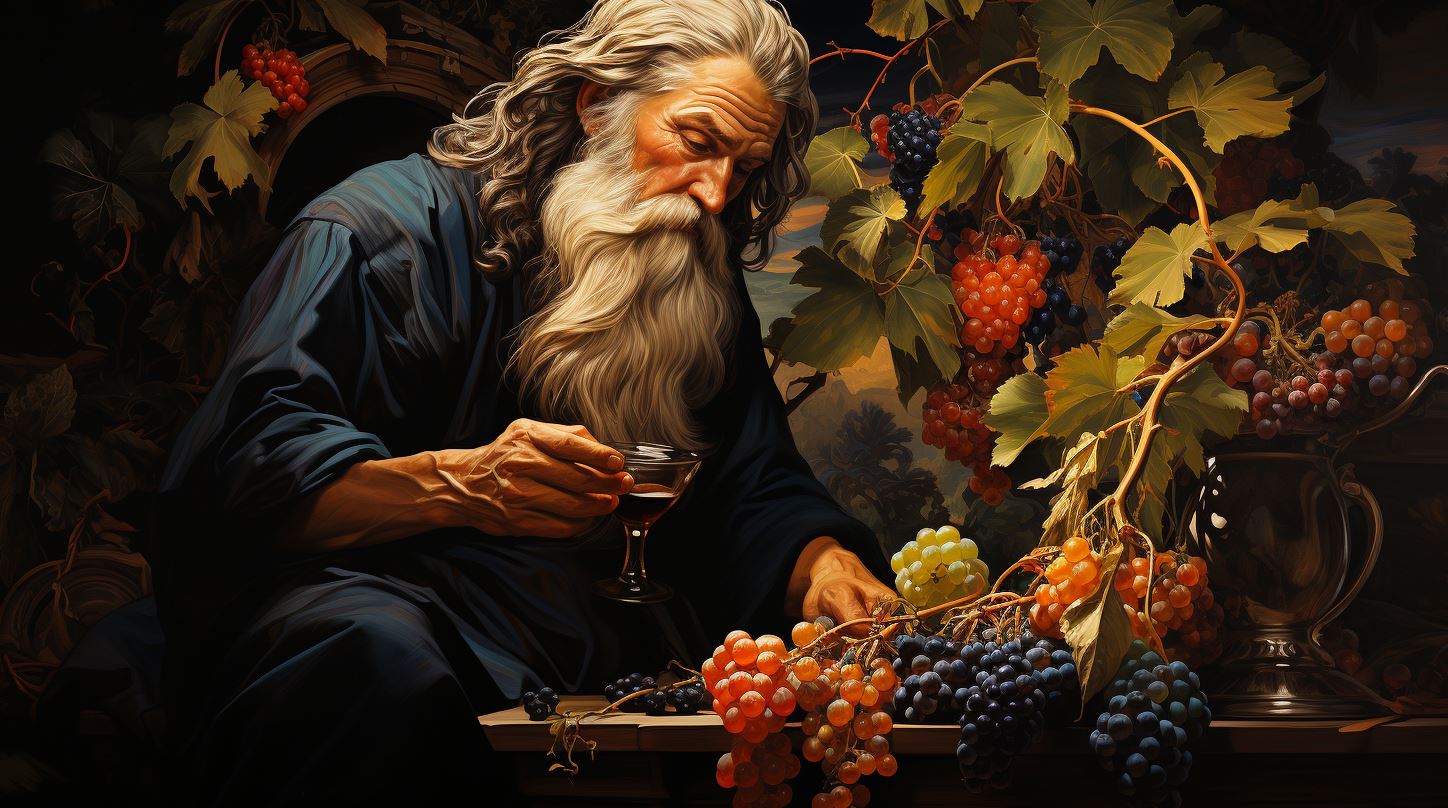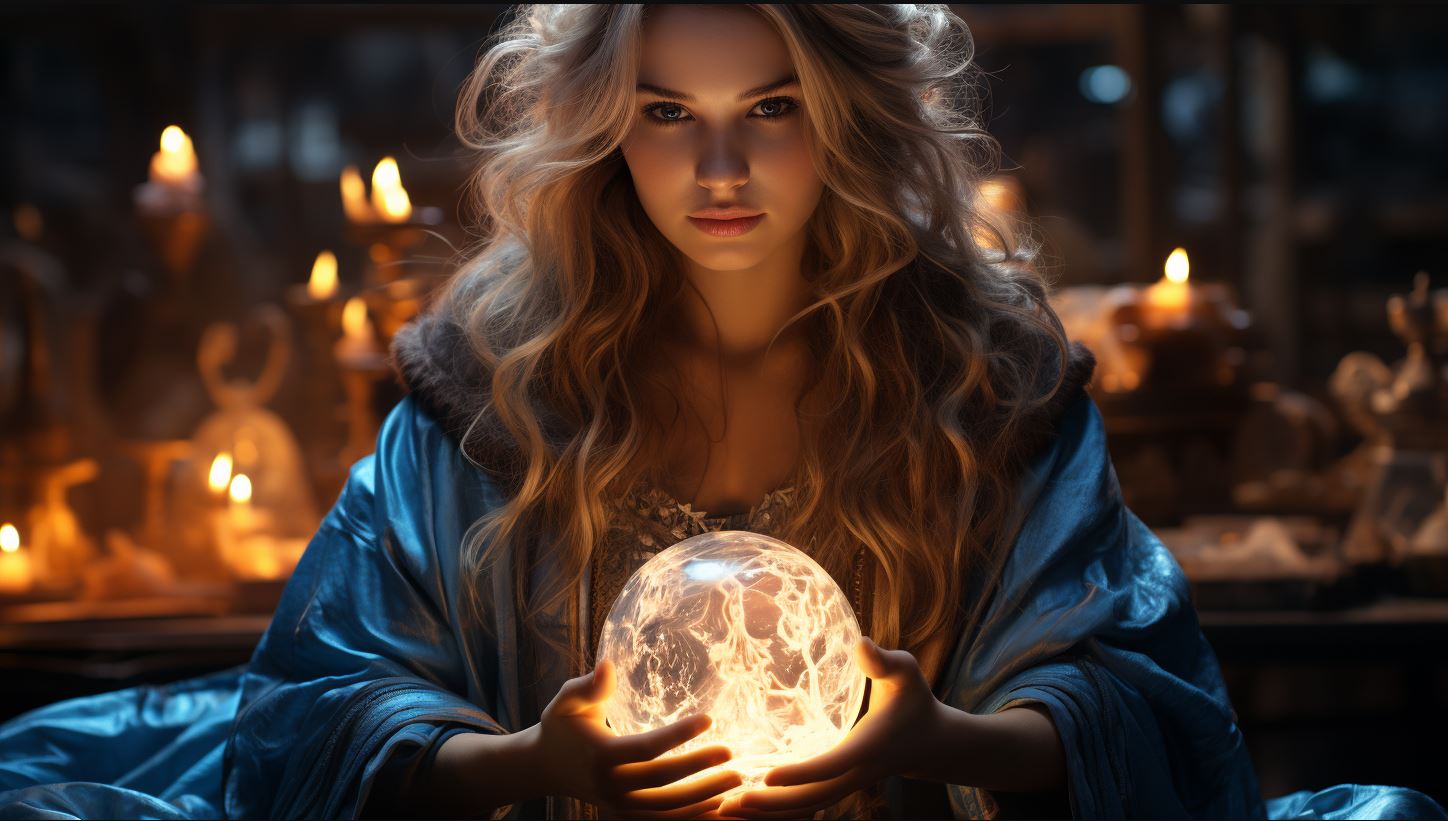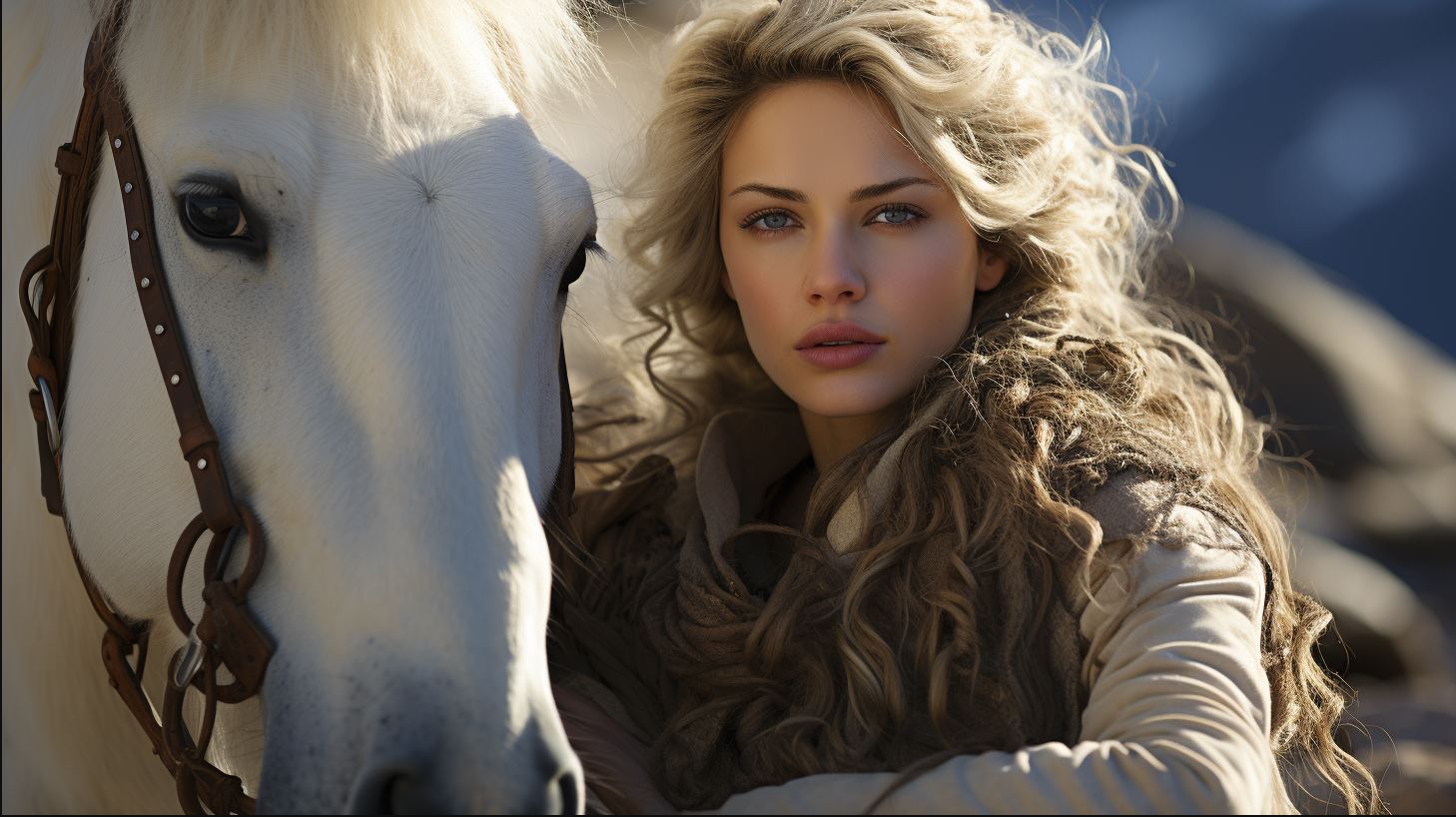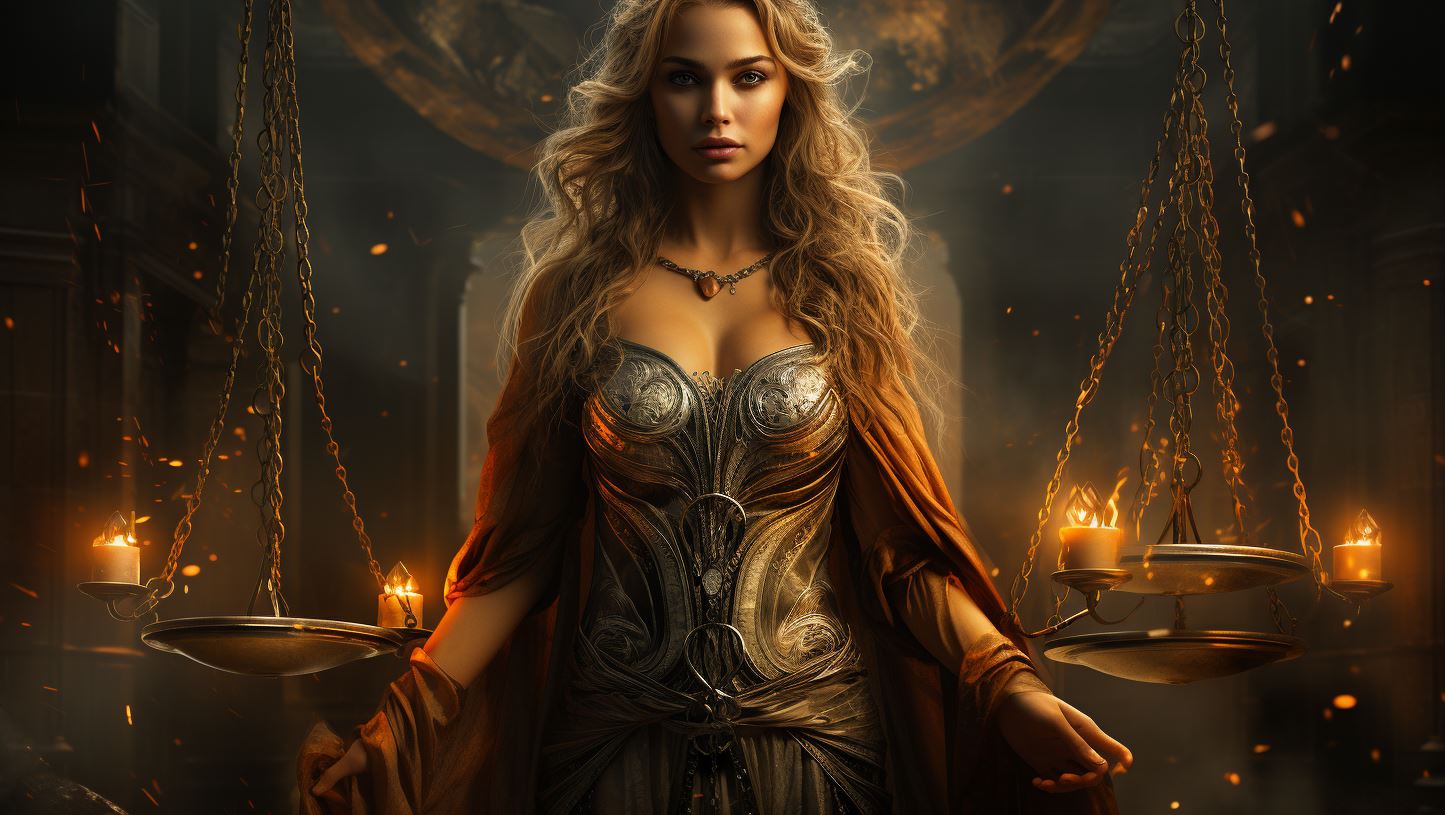Celtic Sea God: Unveiling the Powerful Mythology of Manannán mac Lir
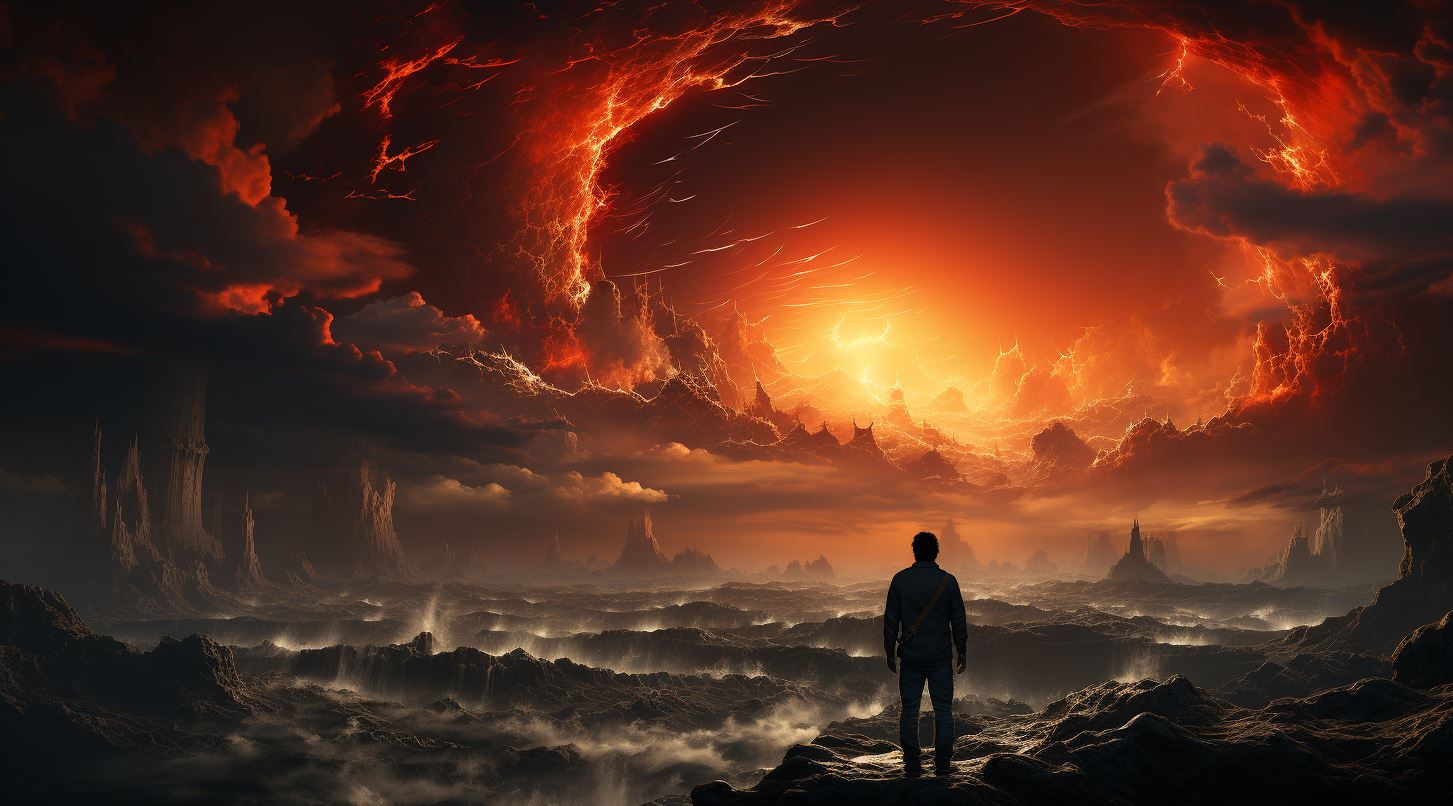
Celtic Sea God, Manannán mac Lir, holds a significant role in Irish mythology. He is revered as the ruler of the Otherworld and a powerful deity of the sea.
Known for his magical possessions, such as the autonomous boat called Sguaba Tuinne, his stories are filled with encounters with humans and adventures on the sea. This article explores the origins, attributes, and legends surrounding Manannán mac Lir, shedding light on his symbolism and influence in Celtic culture.
In addition, we delve into comparisons with other Celtic sea gods like Manawydan fab Llŷr in Welsh mythology. With references in literature and art, we aim to showcase the continued relevance of Manannán mac Lir as a captivating figure that has left an indelible mark on Celtic folklore.
Manannán mac Lir: Celtic Sea God of Irish Mythology
In Irish mythology, Manannán mac Lir is revered as the Celtic Sea God, a figure of great significance and power. This deity, also known as Manannán, holds a prominent role in the mythological tales of Ireland.
Belonging to the Tuatha Dé Danann, he is regarded as a god of the sea and ruler of the Otherworld. Through his tales and attributes, Manannán mac Lir embodies the rich mythological traditions of Celtic culture.
Origins and Mythological Significance
The origins of Manannán mac Lir are deeply rooted in Irish mythology. As a member of the Tuatha Dé Danann, he emerged from the divine race that inhabited ancient Ireland.
Manannán’s mythological significance lies in his role as a god of the sea, symbolizing the profound connection between the Celtic people and the vast expanse of the ocean. He is revered for his ability to control the seas, granting protection to sailors and bestowing bountiful harvests upon the land.
Depictions and Attributes of Manannán mac Lir
Manannán mac Lir is often portrayed as a mighty warrior and king of the Otherworld. He possesses various magical artifacts, including the autonomous ship Sguaba Tuinne, the swift horse Aonbharr, and the powerful sword Fragarach.
Additionally, his enchanted cloak can change its color and render him invisible, while his invincible shield, mighty spear, and impenetrable breastplate serve as symbols of his strength and invulnerability.
Connections to Celtic Sea Gods in Other Cultures
Manannán mac Lir’s influence extends beyond Irish mythology. He is believed to be cognate with the Welsh figure of Manawydan fab Llŷr, linking him to the mythology of neighboring Celtic cultures.
This connection highlights the shared beliefs and interconnectedness of the Celtic pantheon across various regions. The sea gods in these cultures often share common themes of protection, abundance, and the mysterious realm of the Otherworld.
Legends and Stories Featuring Manannán mac Lir
The mythology surrounding Manannán mac Lir is rich with captivating legends and enchanting tales, showcasing his extraordinary powers and divine presence. This section explores some of the most prominent stories associated with the Celtic Sea God.
Encounter with Bran and his Crew
One notable legend recounts Manannán’s encounter with Bran and his crew during their sea voyage. According to the tale, Manannán appeared before them, gliding effortlessly across the water on his magical chariot.
Impressed by his divine presence, he engaged in conversation with Bran, sharing wisdom and guidance.
Manannán as a Trickster and Shape-shifter
Manannán mac Lir is renowned for his mischievous and cunning nature, often depicted as a master of tricks and illusions. He is believed to possess the ability to shape-shift, assuming various forms such as the wind, a hawk, or even a graceful swallow.
These transformations allowed him to navigate different realms and exert his influence over the land and sea.
Role as Guardian of the Blessed Isles and Other Realms
As the sea god, Manannán was entrusted with the responsibility of safeguarding the Blessed Isles, also known as the Otherworldly realms of Mag Mell and Emhain Abhlach. He ensured the protection of these ethereal realms, granting passage to worthy souls and overseeing the harmonious existence of divine beings.
The legends and stories surrounding Manannán mac Lir highlight his status and influence as a Celtic Sea God. From his encounters with mortals to his shape-shifting abilities and role as guardian of sacred realms, his mythological significance remains a captivating aspect of Celtic folklore.
Symbolism and Influence in Celtic Culture
The symbolism and influence of Manannán mac Lir in Celtic culture are extensive, encompassing various aspects such as place names, folklore, associations with the sea, and agriculture. Through these representations, Manannán’s significance resonates deeply in Celtic mythology and has had a lasting impact on the cultural traditions of the Celtic people.
Representation in Place Names and Folklore
Manannán mac Lir’s influence is evident in numerous place names throughout Celtic regions. From islands to coastal landscapes, many locations bear his name, serving as a testament to his importance in the local folklore and heritage.
These place names hold a sense of mystique and connection to the Celtic sea god, preserving his memory and legacy in the hearts and minds of the people.
Association with the Sea and Agriculture
Manannán mac Lir’s close association with the sea is a fundamental aspect of his symbolism.
As the god of the sea, he holds dominion over its vast depths and unpredictable nature. He is revered by sailors who seek his protection during their voyages, and fishermen rely on his guidance for abundant catches.
Additionally, Manannán is also associated with agriculture, where he is believed to bestow blessings upon the land, ensuring prosperous harvests and fertility.
Manannán mac Lir’s Continued Relevance
Despite the passage of time, Manannán mac Lir’s influence continues to remain strong in Celtic culture. His presence can be felt in various artistic expressions, including literature, music, and visual art.
Numerous references to him can be found in Celtic mythology, where tales of his exploits and interactions with mortals are passed down through generations. These stories serve as a reminder of his power and presence, reinforcing his significance as a revered and respected deity in Celtic beliefs.
- Representation in place names and folklore
- Association with the sea and agriculture
- Continued relevance in Celtic culture
Other Celtic Sea Gods and Mythological Comparisons
Manawydan fab Llŷr: The Welsh Equivalent
In Welsh mythology, Manawydan fab Llŷr is the counterpart to Manannán mac Lir. He is also associated with the sea and is considered a divine figure in Welsh folklore.
Just like Manannán, Manawydan is depicted as a powerful and enigmatic deity with control over the ocean.
According to Welsh legends, Manawydan fab Llŷr possesses various magical attributes, including a ship that can sail without a crew and a cauldron that can provide endless sustenance.
Like his Irish counterpart, Manawydan is revered as a guardian of the Otherworld and is said to have connections with the land of the dead.
Similar Deities in Celtic Mythologies
- Dylan: In Welsh mythology, Dylan is another sea god associated with the Celtic pantheon. He is often portrayed as a handsome and benevolent deity who brings good fortune to fishermen.
- Lir: In Irish mythology, Lir is the father of Manannán mac Lir. While Lir himself is not specifically associated with the sea, his lineage highlights the importance of water and the divine connection between the Celtic deities and the ocean.
- Tethra: Tethra is a lesser-known Celtic sea god mentioned in Irish mythology.
He is often depicted as a fierce warrior and ruler of the underwater kingdom, associated with the realm of the deep sea.
These deities, alongside Manannán mac Lir and Manawydan fab Llŷr, represent the diverse beliefs and cultural significance of the sea gods in Celtic mythologies.
Their presence in legends and folklore showcases the enduring fascination and reverence for the vast and mysterious ocean.
See Also
References to Manannán mac Lir in Literature and Art
Throughout history, Manannán mac Lir has left a lasting impression on various forms of artistic expression. His intriguing mythology and role as a Celtic Sea God have been the subject of inspiration for countless writers and artists.
In literature, notable references to Manannán mac Lir can be found in works such as William Butler Yeats’ poem “Manannan’s Cloak” and Lady Augusta Gregory’s play “Gods and Fighting Men.”
These creative interpretations capture the essence of Manannán’s power and bring his mystical presence to life on the page.
Artistic representations of Manannán mac Lir also abound, showcasing his iconic attributes and mythical status. Paintings, sculptures, and illustrations convey his kingship over the sea and his association with magical artifacts like his sword, Fragarach, and his majestic horse, Aonbharr.
These artworks serve as visual testaments to the enduring fascination with Manannán and his captivating tales within Celtic mythology.
Mythological Figures Associated with the Sea
While Manannán mac Lir holds a prominent place in Celtic mythology as a sea god, he is not the only deity connected to the vast oceanic realm. Celtic folklore and traditions feature a host of other mythological figures associated with the sea, each possessing their own unique qualities and significance.
One such example is the Welsh god Manawydan fab Llŷr, who shares striking similarities with Manannán mac Lir in terms of rulership over the Otherworld and their connection to the sea.
Additionally, the sea holds great importance in various mythologies around the world. From the Greek god Poseidon to the Norse deity Aegir, mythological figures linked to the sea represent the vast and unpredictable nature of the ocean.
These entities often embody both the nurturing and destructive aspects of the sea, symbolizing its power and influence over human life.
- Manawydan fab Llŷr: The Welsh Equivalent
- Poseidon: The Greek God of the Sea
- Aegir: The Norse Sea God
- Yemoja: The Yoruba Goddess of the Ocean
- Rán: The Norse Goddess of the Sea
The existence of these diverse sea-related mythologies highlights the universal fascination with the immense body of water that covers our planet.
It serves as a reminder of humanity’s deep-rooted connection to the sea and the profound impact it has had on cultures across the globe.
.

